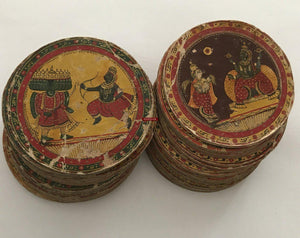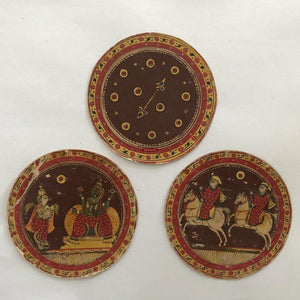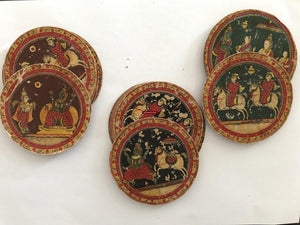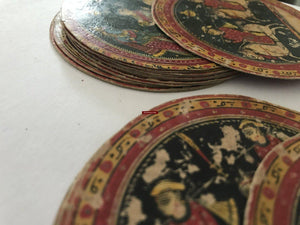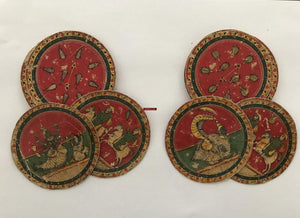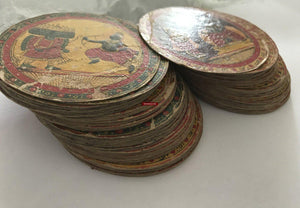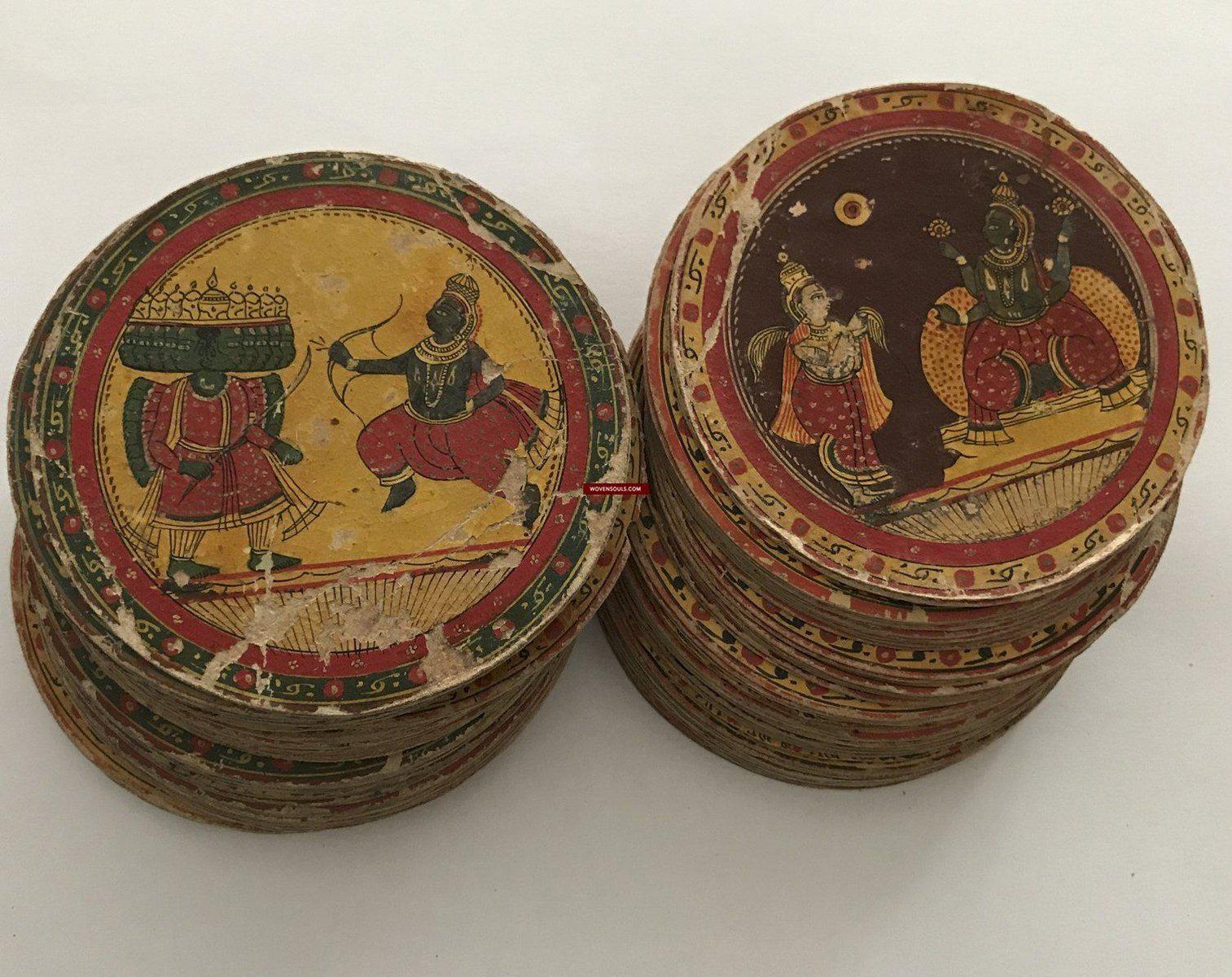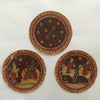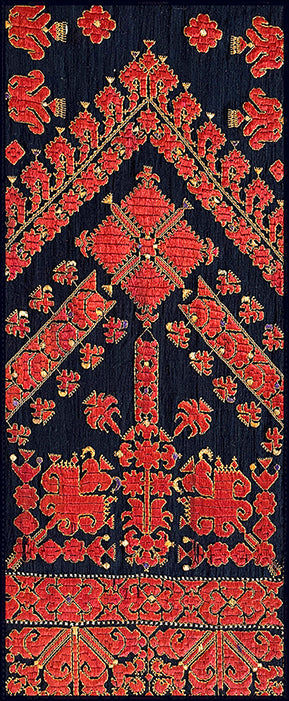Your Cart is Empty
1294 SOLD - Old Painted Ganjifa Playing Cards - Complete Set, India
Sold to a discerning Antique Art-Lover
***
Sold
Complete Dashavatara Ganjifa Card Playing Set
Sawantwadi
Rarely available Complete Set of 120 cards with 10 suits of 12 cards each
82.5 mm Diameter / 3 1/4 inches
Stiffened Cloth. All Natural Paints.
Ten suits of twelve cards, each suit is based on one of the ten incarnations of Vishnu. An upper court card, Raja, a lower court card, Pradhan or Mantri, and ten images in each suit. Normally Each suit has 10 pip cards and two courts King (Raja) and Minister (Mantri) which are here Vishnu and perhaps Lakshmi.
Historically this game is believed to have been brought to India and popularized during the Moghul period. The general assumption is Moghul Emperors brought the cards to India early in the sixteenth century. Once established, the cards spread to most regions of India either in the original form known as Moghul Ganjifa, or in their slightly later Hindu form; ten suits of twelve cards each, known as Dashavatara Ganjifa
Each region in the country had its own form of the game. There was the Sawantwadi Ganjifa from Maharashtra, Navadurga Ganjifa from Orrisa, Rajasthan and Gujarat Ganjifa, Kashmir Ganjifa, Nepal Ganjifa and the Mysooru Ganjifa which was greatly patronized by the Mysore Royal family during their reign.
In Maharashtra and Orissa, Ganjifa was a widespread Brahmin pastime. Old people are still seen playing Dashavatara Ganjifa near Puri Temples, mainly with 16-suited 192 card decks. A later Brahmin rationalization of this pursuit was notion that the performance of the game is pleasing to the God. Around 1885, Hari Krishna Venkataramana argued that by playing the Vishnu memorizing game, ones sins are washed away. It is said in Shri Bhagwata Purana, which invokes the name of Vaikunta through gestures, and even via joking and abuse, sins are made to wash away. If the name of the God is used during the game saying, “Your Rama did this” or “Your Matsya lost” and “My Narasimha won”, through the repetition of the God’s name sins are remitted.
Fragile condition with signs of wear, chipping, edge tears, flaking and so on. As these are objects that have faced heavy handling in serving the purpose of their existence this is to be expected.
Age unknown but appears to be significantly old.
***
This item has spent a lifetime being used for the purpose of its creation with the original artist/user. Signs of this life lived heartily may be present on the piece in the form of stains, thread loss, loose threads, holes, tears, color run and other imperfections. Therefore the condition must be assumed to be “not” perfect. More photos of such imperfections will be provided on request.
***
.
Like it? Share it with friends on Facebook!
.......................................................................................................................








